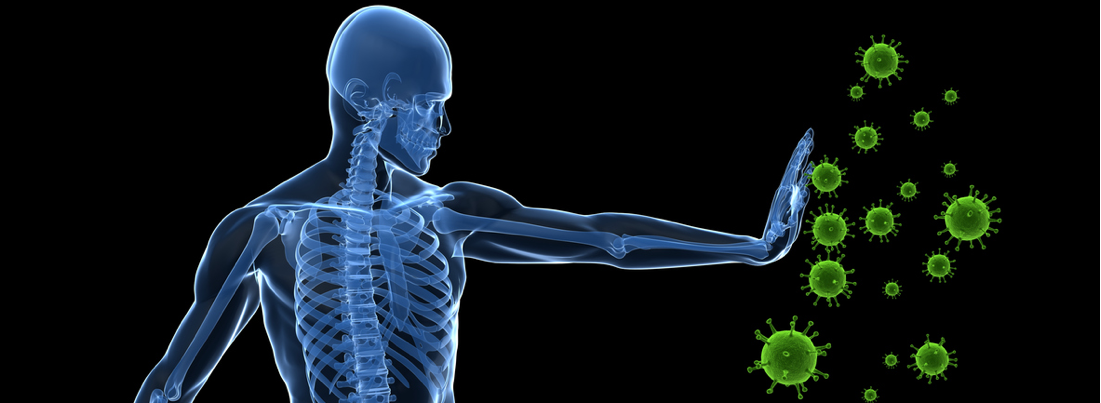Behind the redness, swelling, heat and pain of any infection or injury, a biological war is occurring. Injured cells release chemicals that alert our immune system that something is wrong. One of these chemicals, chemokines, attract and direct white blood cells (i.e. macrophages, lymphocytes) to the injured area where they swarm and kill invading bacteria or microbes, ingest debris, eliminate foreign matter and trigger the repair of tissue. This acute inflammation response also causes an increase in blood flow (vasodilation), swelling, pain and heat that usually lasts only a few hours or days.
Inflammation is essential to healing. Without it, even the smallest of infections could become life threat- ening but when uncontrolled, inflammation plays a role in almost every major disease, including cancer, heart disease, diabetes, Alzheimers and depression. A poor diet, smoking, alcoholism and obesity are well known to promote chronic inflammation.
In 2016, several studies sought to determine what role, if any, inflammation plays in IC, especially Hunner’s lesions. They produced yet more compelling evidence that Hunner’s lesions are a separate, distinct disorder of the bladder.
Urine levels of Macrophage Migration Inhabitory Factor Are Increase In Patients With Inflammation
In an interesting international study, researchers sought to determine if macrophage inhibitory factor, a pro-inflammatory cytokine, increased in patients with inflammatory diseases of the bladder. They studied IC patients with and without Hunner’s lesions, as well as patients with UTI and radiation cystitis.Their results found that patients with
Hunner’s lesions had higher levels of MIF when compared to IC patients without, suggesting that MIF could serve as a marker to distinguish between the two conditions. It’s worth noting that a study in 2014 (Polyomavirus BK–a potential new therapeutic target for painful bladder syndrome/interstitial cystitis?) found that patients with Hunner’s lesions had a virus in their urine which could explain the increased inflam- matory response. Not surprisingly, patients with UTI and radiation cystitis also had higher levels which makes sense given the fact that the body is defending itself against infection and radiation damage.
Source: Ma, F, et al. Urine levels of macrophage migration inhibitory factorare increased in patients with bladder inflammation. AUA 2016 Abstract MP72-01
B-Cell Lymphocytes Found In Higher Quantities in Hunner’s Lesions Patients
A second study also sought to determine the type of immune response that occurs in Hunner’s lesions. Researchers in Japan took biopsies from 27 lesion patients, 39 non lesion IC patients and 15 non- IC patients and studied the infiltration, if any, of T-lymphocytes, B-lymphocytes, (lymphocytes created by bone marrow), plasma cells and the depth of the bladder epithelium. Their study demonstrated that B-cell lymphocytes were found in significantly higher levels in patients with lesions. They also found that the epithelium was significantly smaller when compared to other patients. They conclude that Hunner’s lesions are, indeed, a distinct inflammatory disorder.
Source: Akiyama Y, et al. Frequent expansion of clonal B-cells suggestive of specific immune responses in Hunner type IC. AUA 2016 Abstr act MP72-02
Urinary Chemokines May Predict IC/BPS in Patients With Urinary Symptoms
Researchers in Japan compared both immune and inflammatory urine markers in IC patients with Hunner’s lesions, IC patients without lesions, overactive bladder patients and controls. They found that IC/BPS patients had increased levels of vascular endothelial growth factor, fibroblast growth factor and several T-helper related chemokines. They did not find, however, a distinct difference between the two groups of IC patients. However, they did find that urinary symptoms did correlate with specific markers, particularly CSCL10.
Source: Furata A, et al. Urinary chemokines as predictors of IC/BPS in patients with lower urinary tract symptoms. AUA 2016 Abstract MP72- 03
Urinary Chemokines Predict Functional Bladder Capacity
Researchers in Michigan and Taiwan collaborated to determine if inflammatory chemokine/cytokine levels correlated with functional bladder capacity. They took urinary specimens from non ulcerative IC patients who had decreased bladder capacity vs. normal bladder capacity. Thirteen specific cytokines were measured demonstrating that there was a strong and significant correlation between inflammation and functional bladder capacity. They suggest that these measurements could be used in the phenotyping of IC patients as well.
Source: Lamb L, et al. Dexpression of multiplex urine cytokines discriminate functional bladder capacity in IC patients. AUA 2016 Abstract MP72-07

